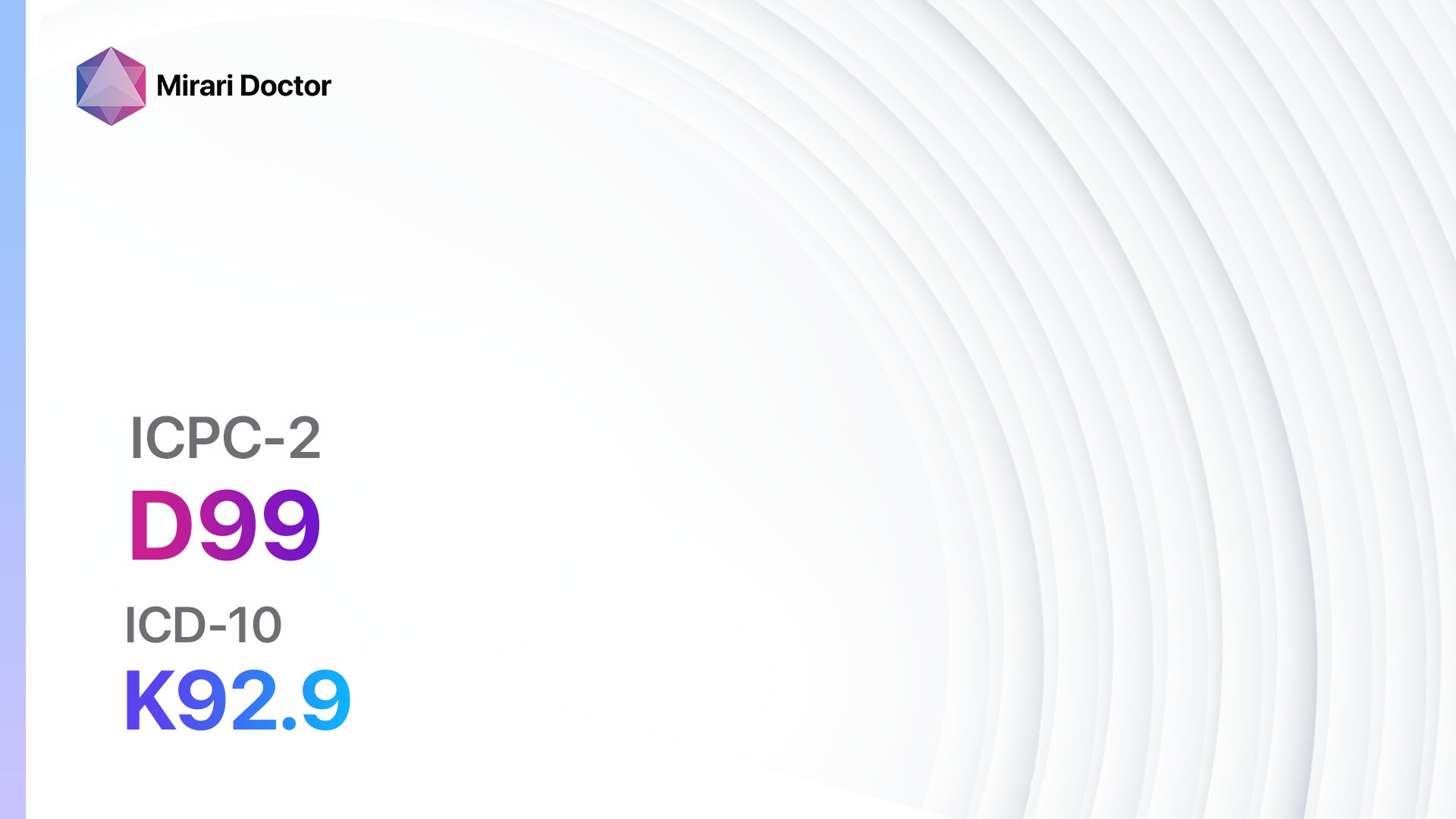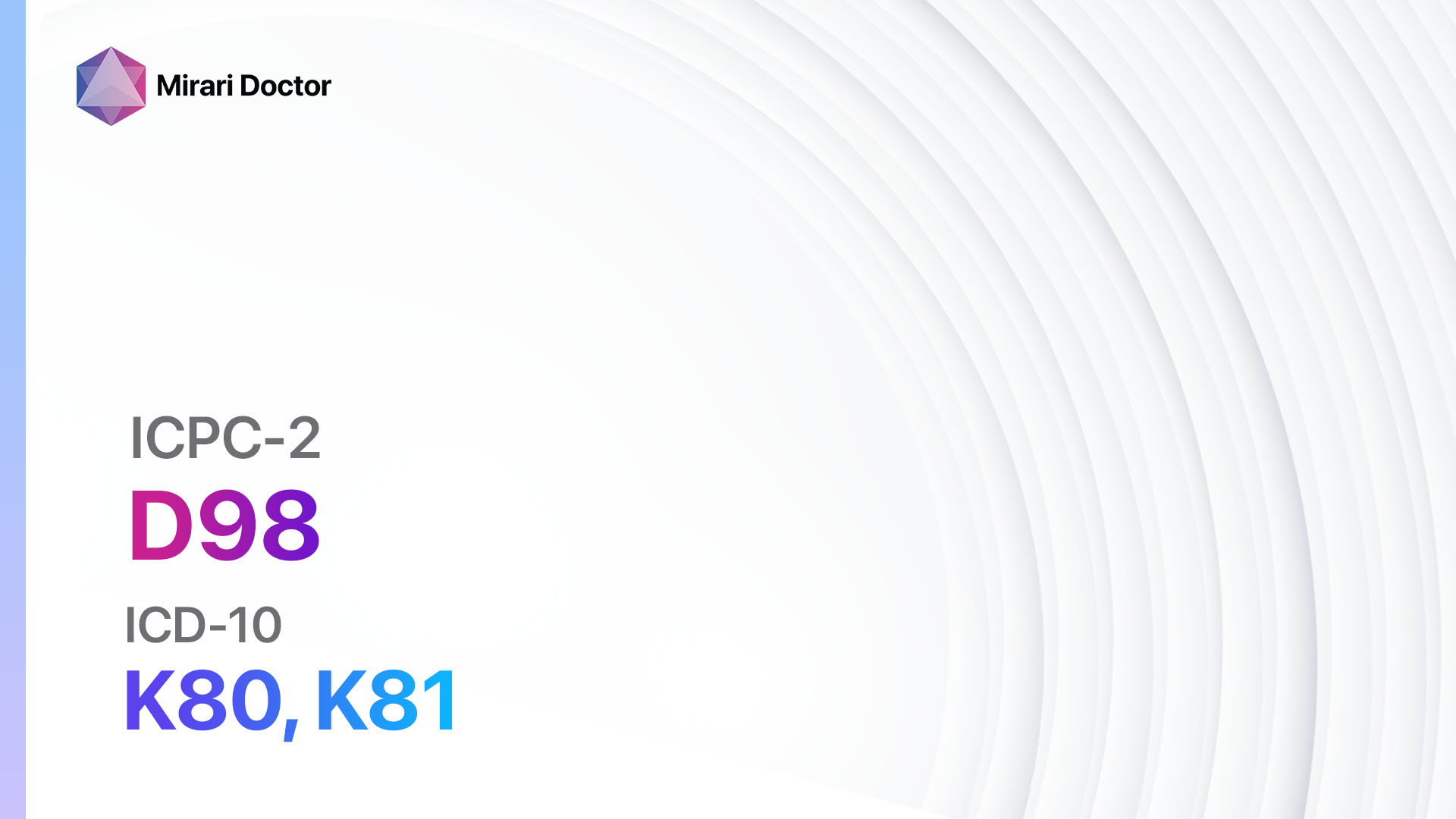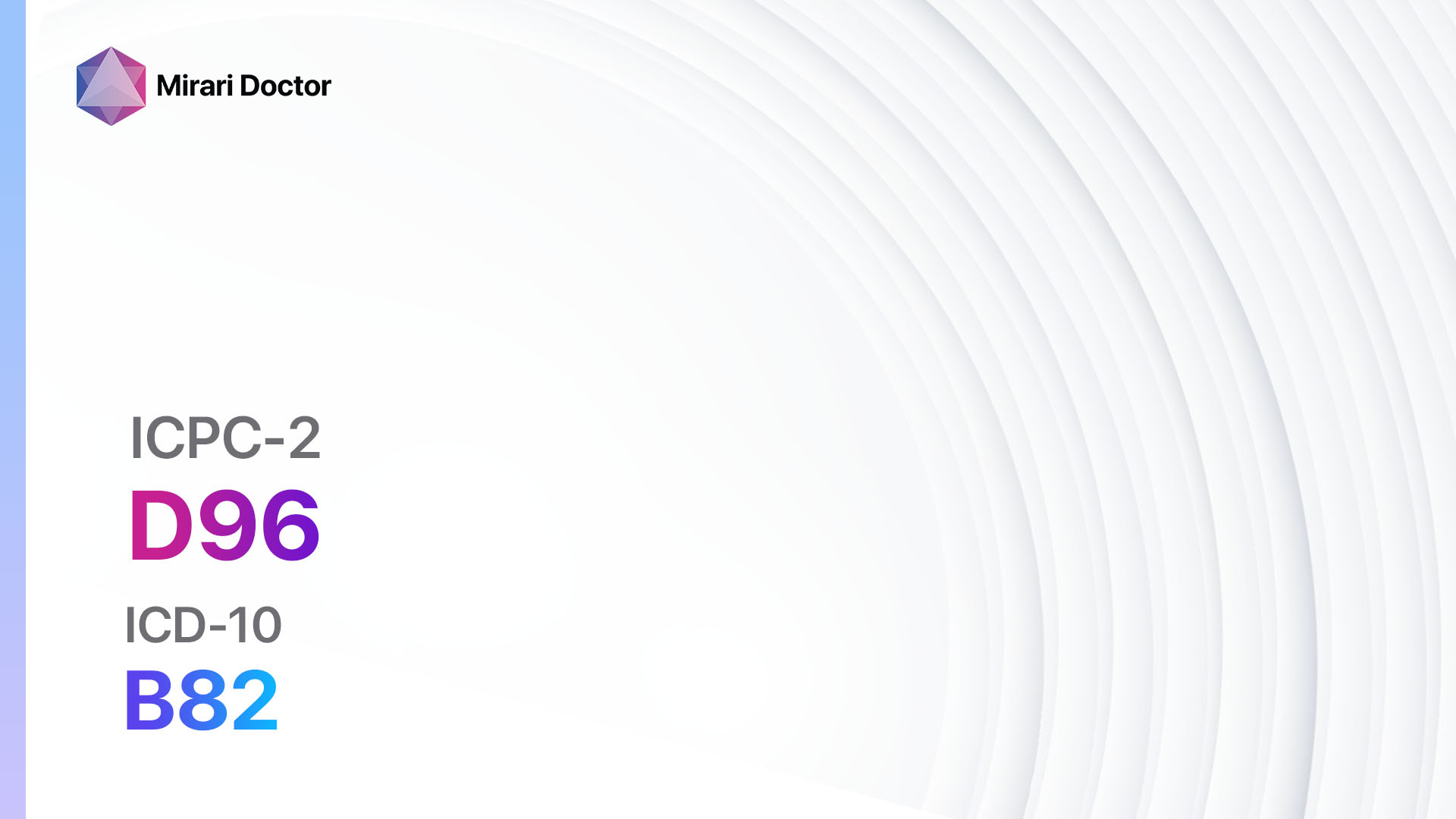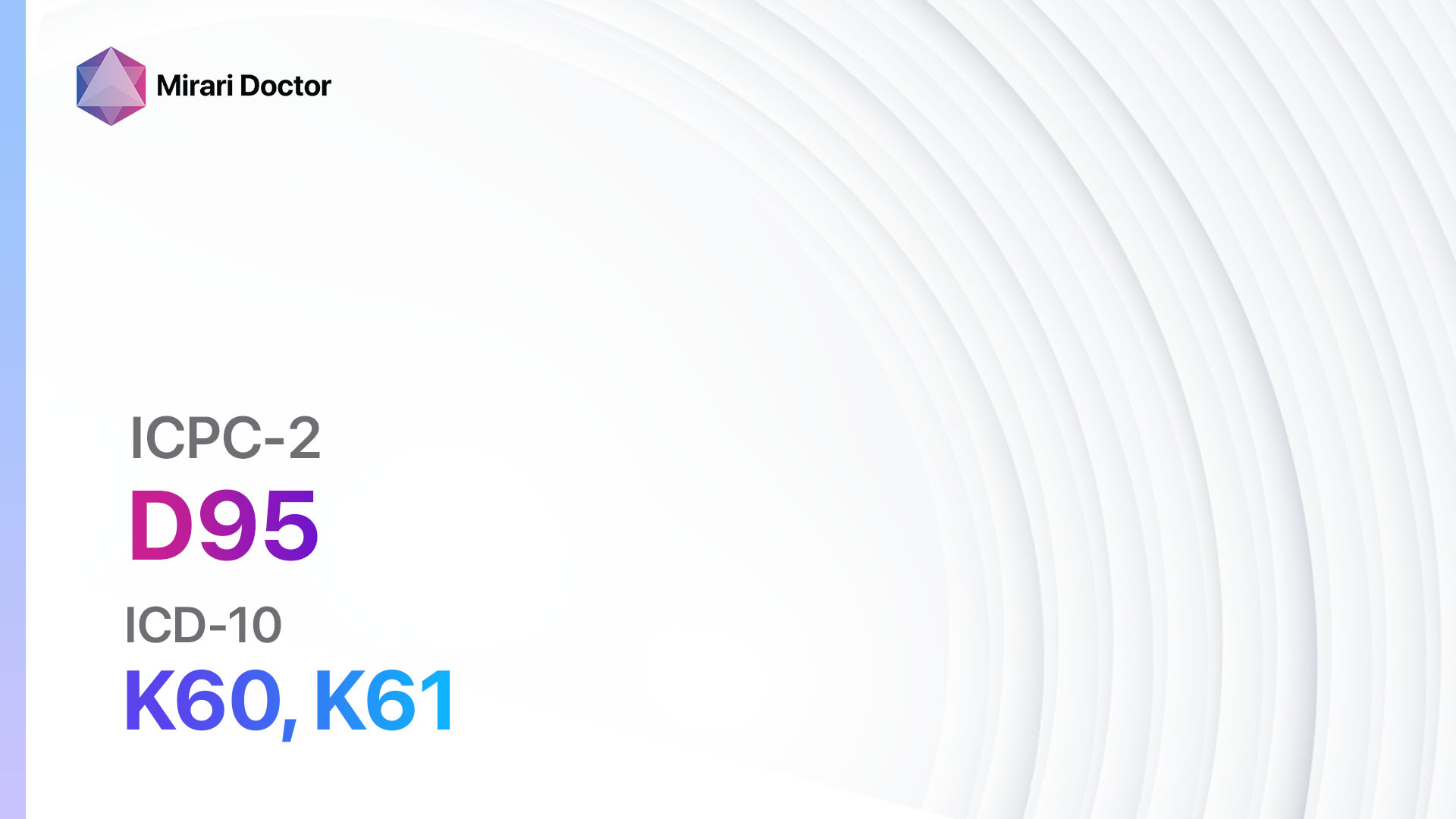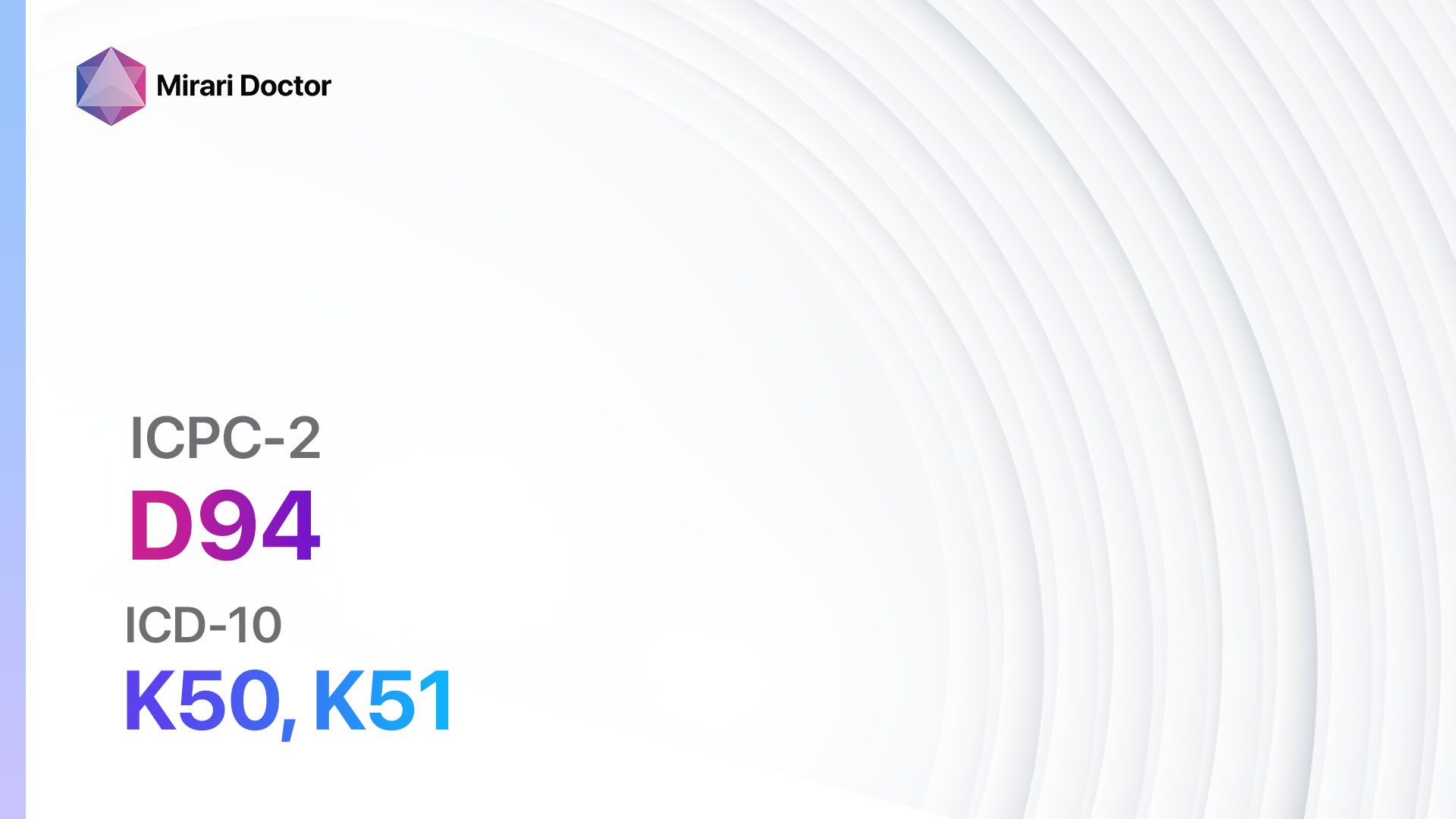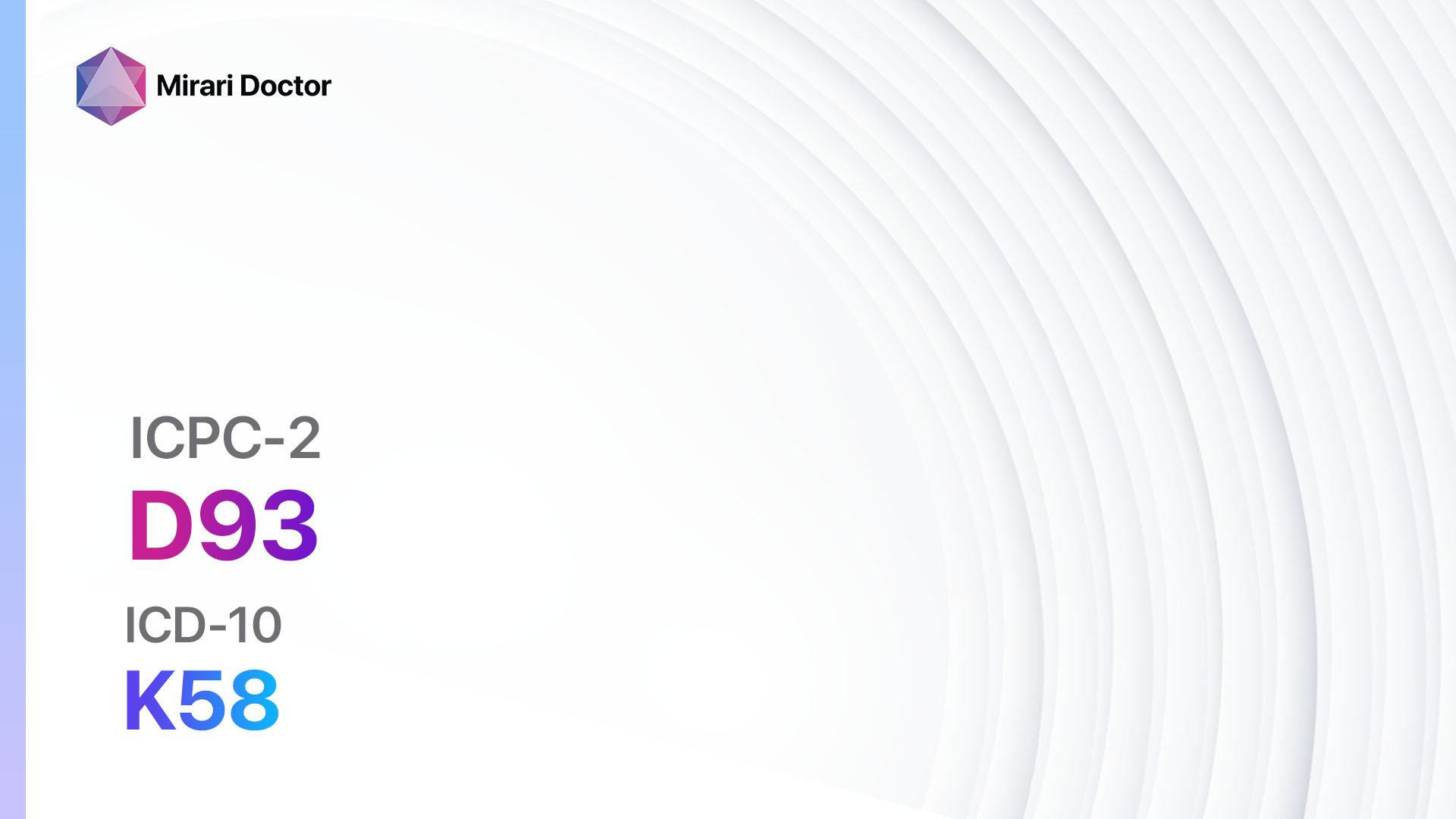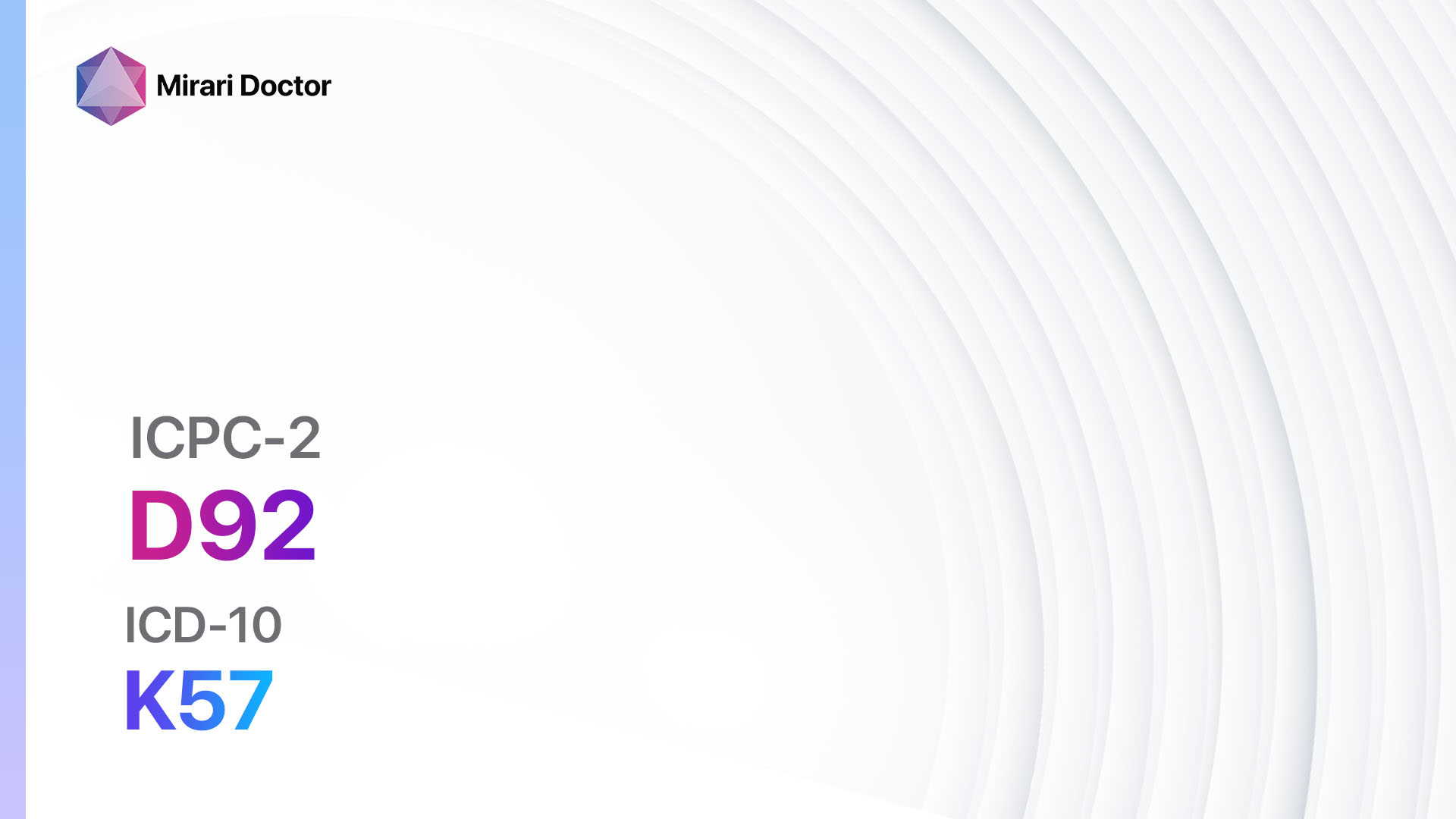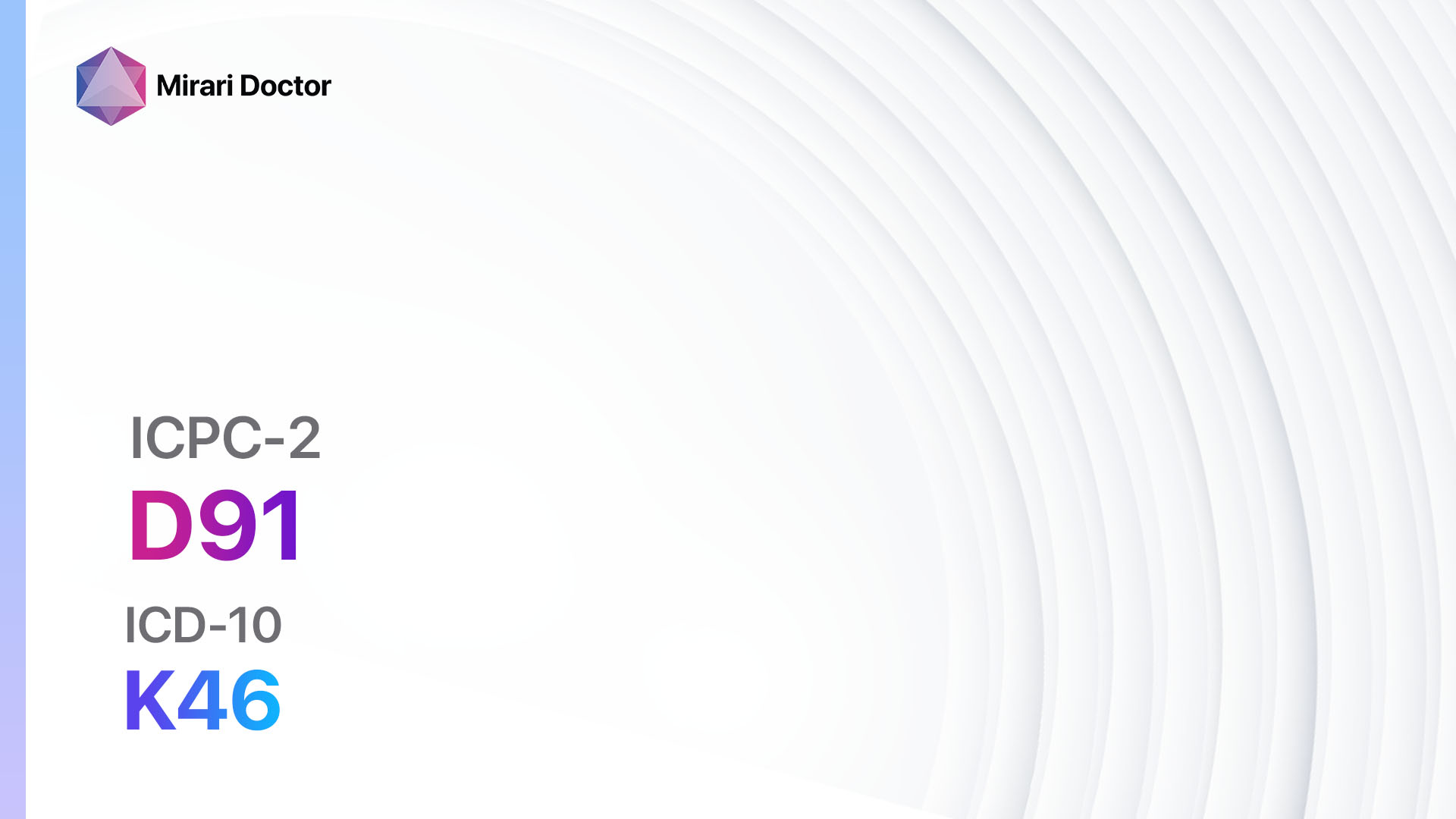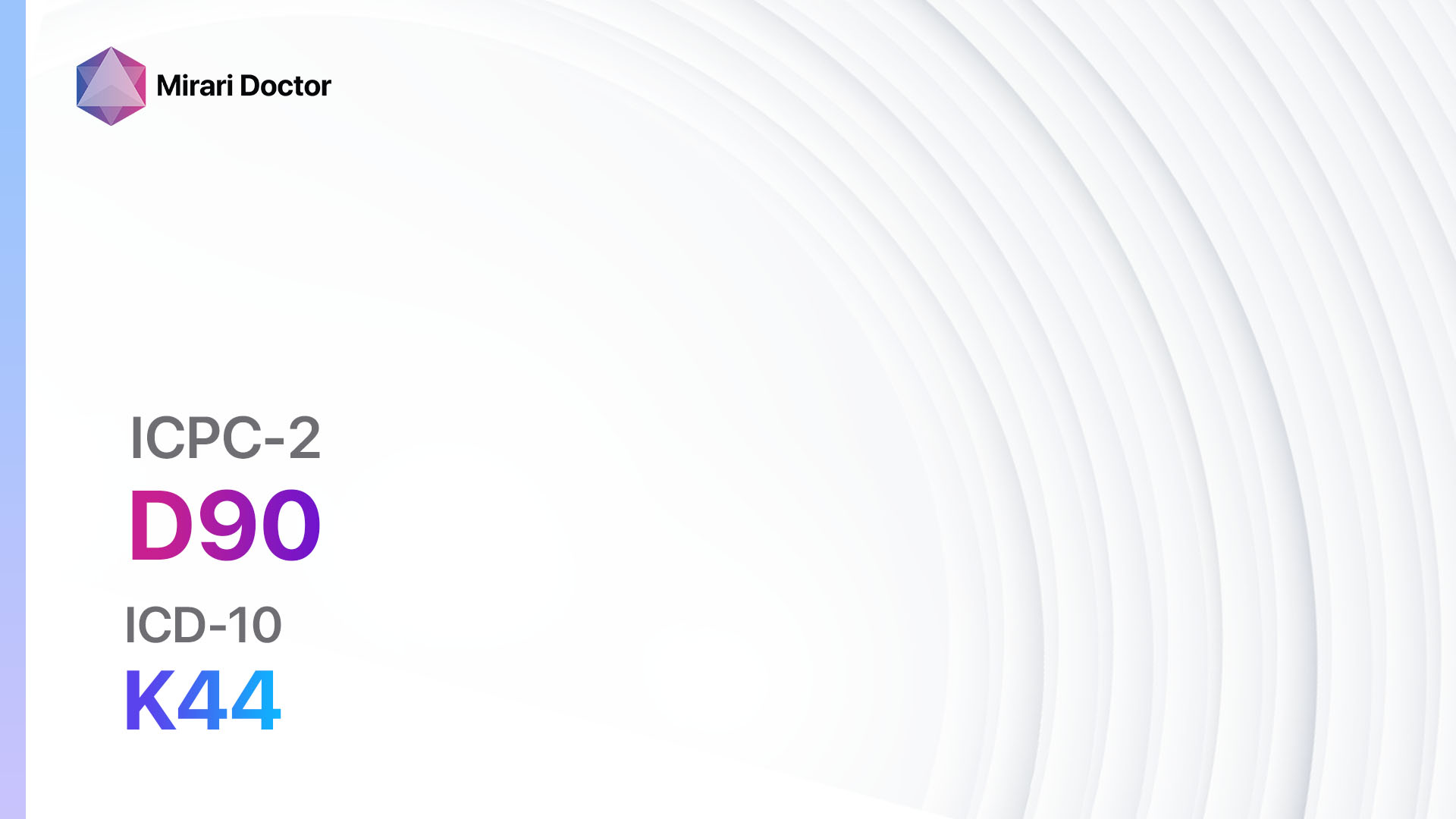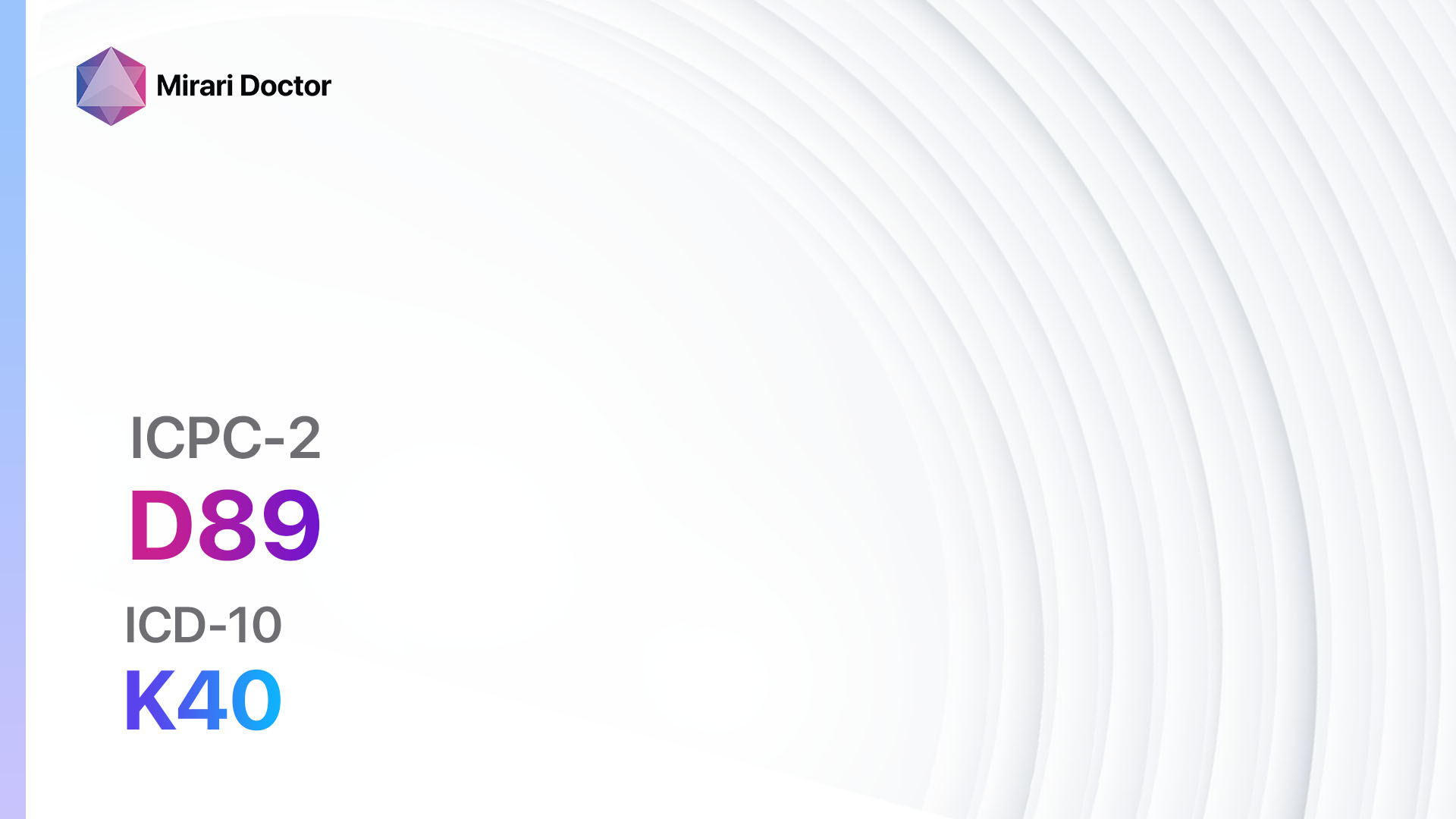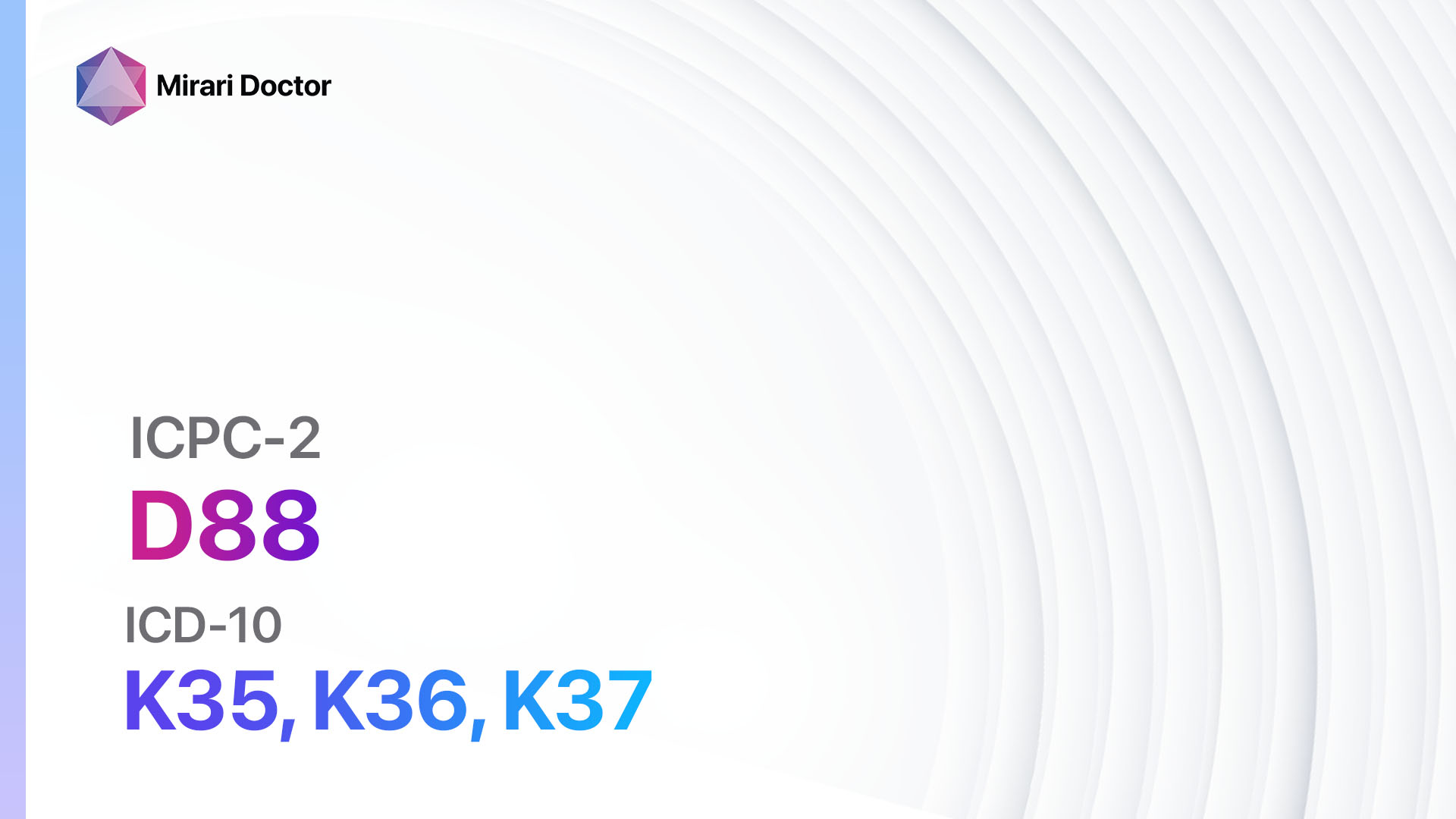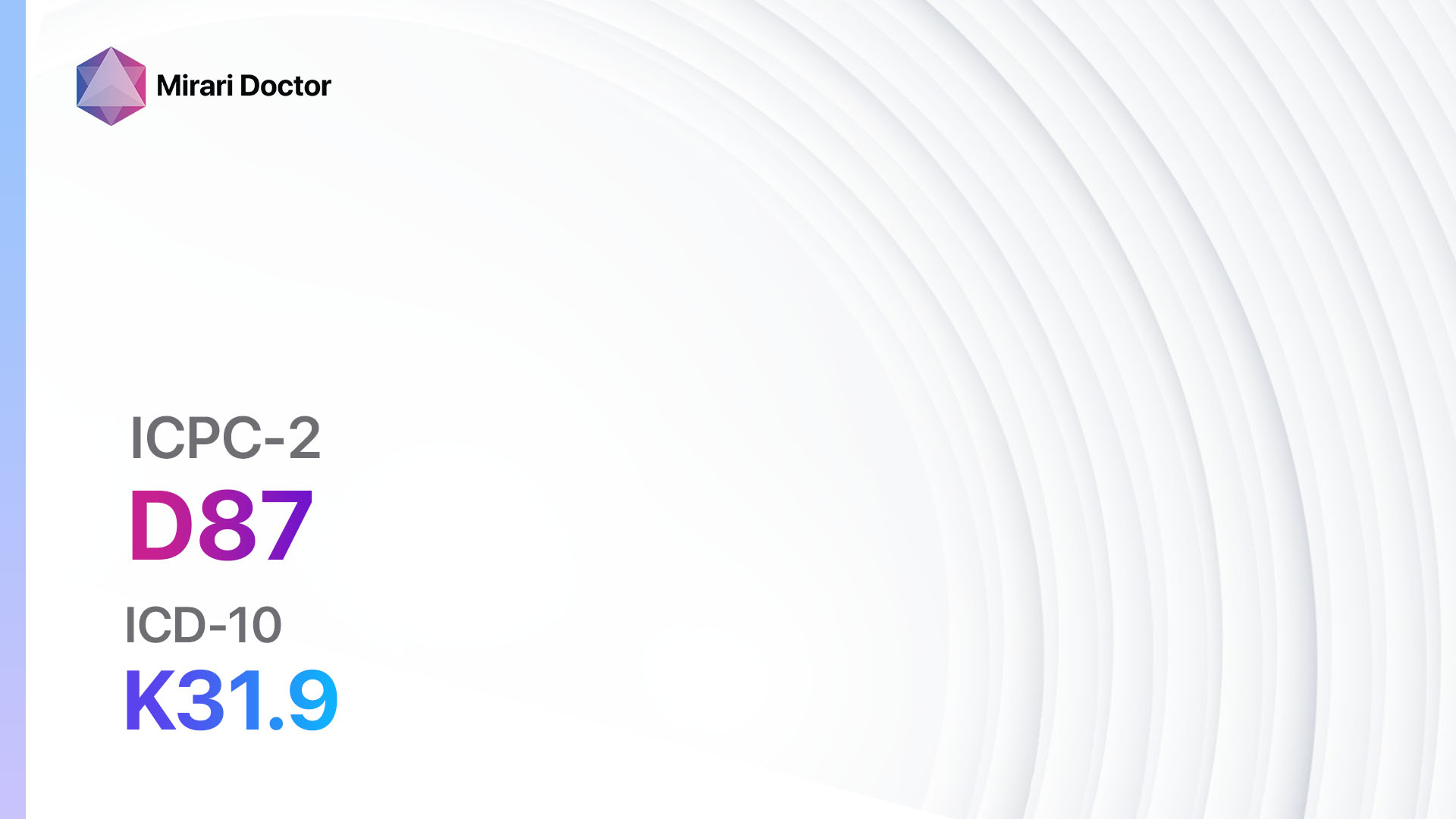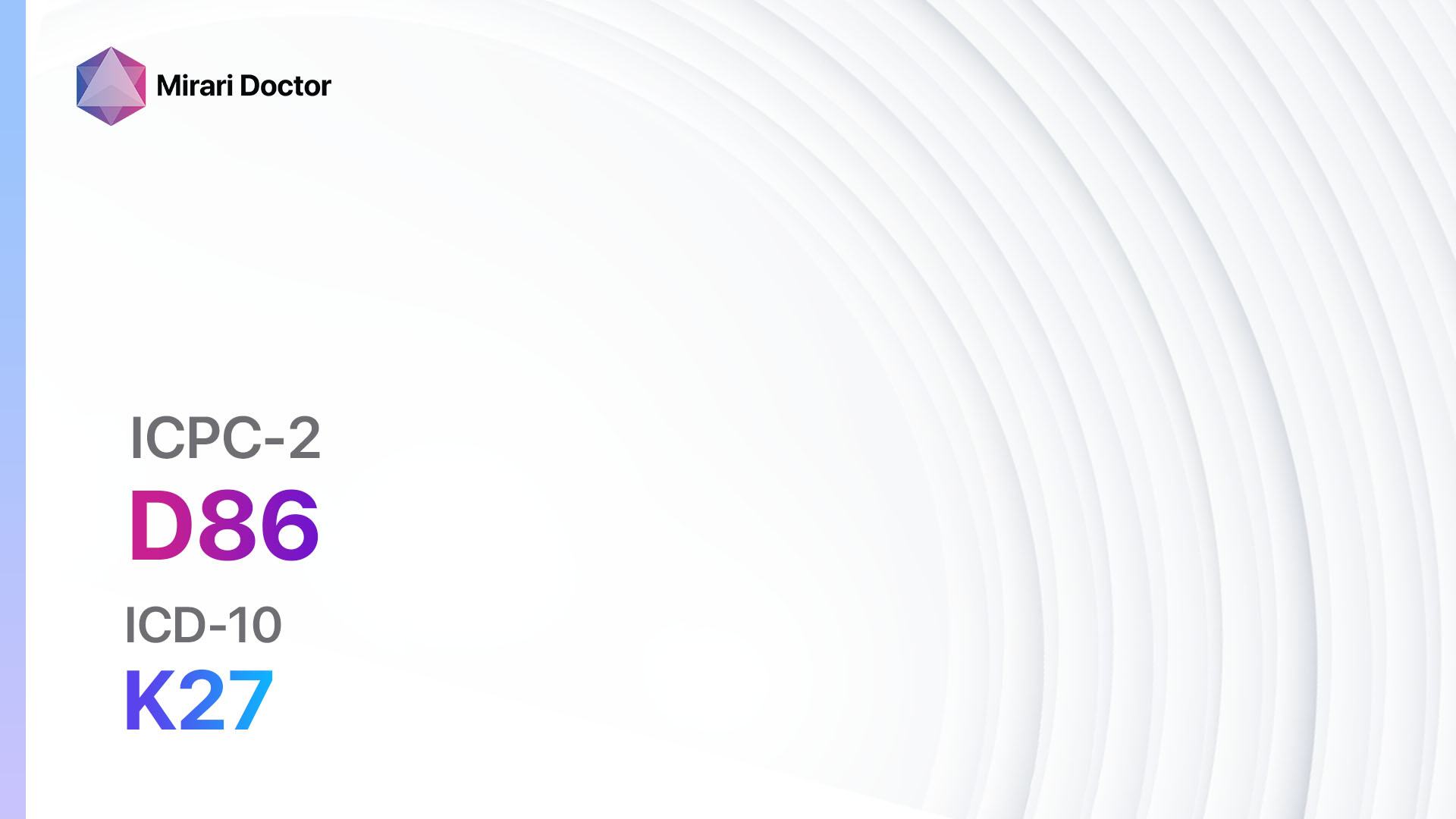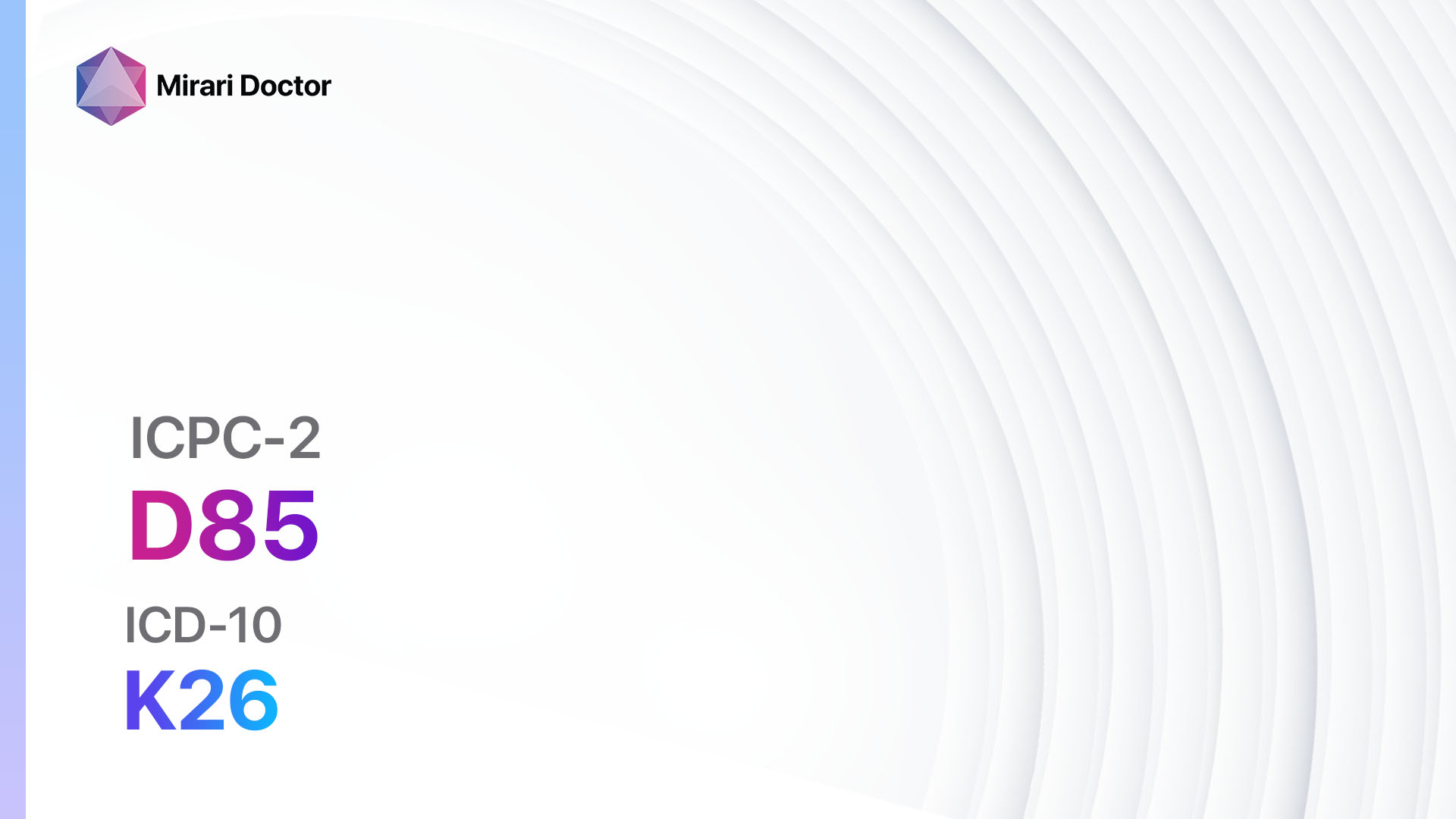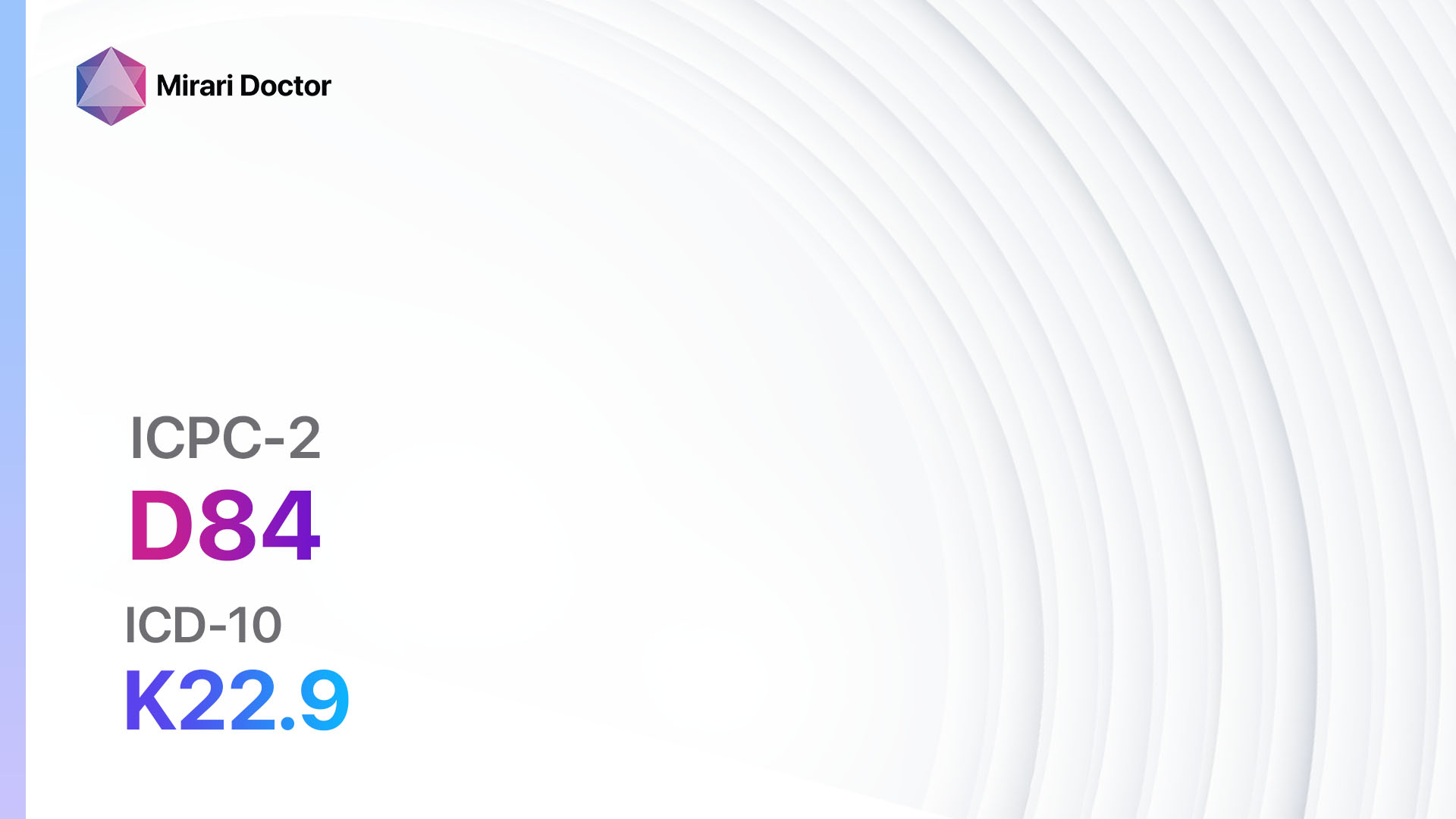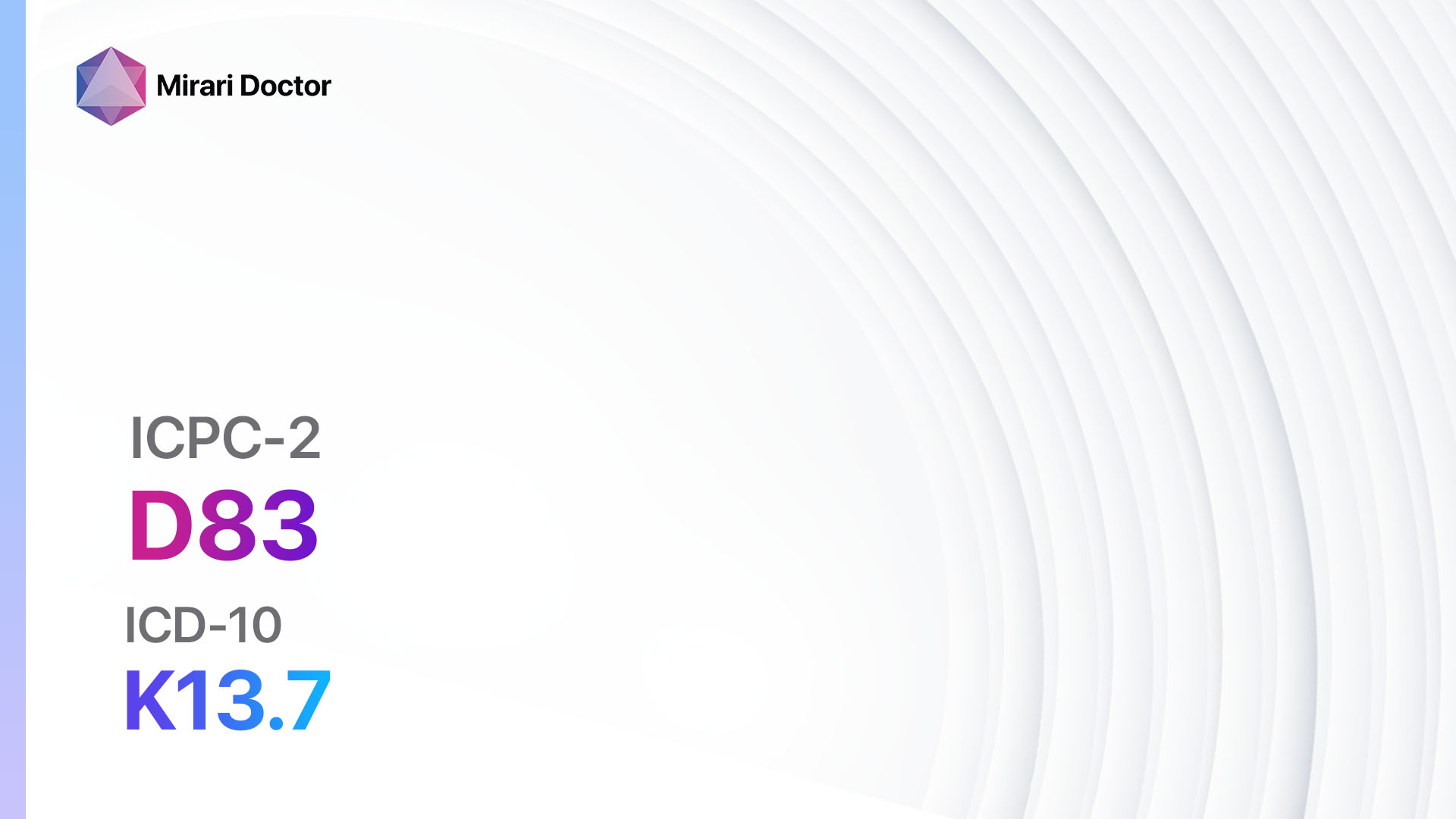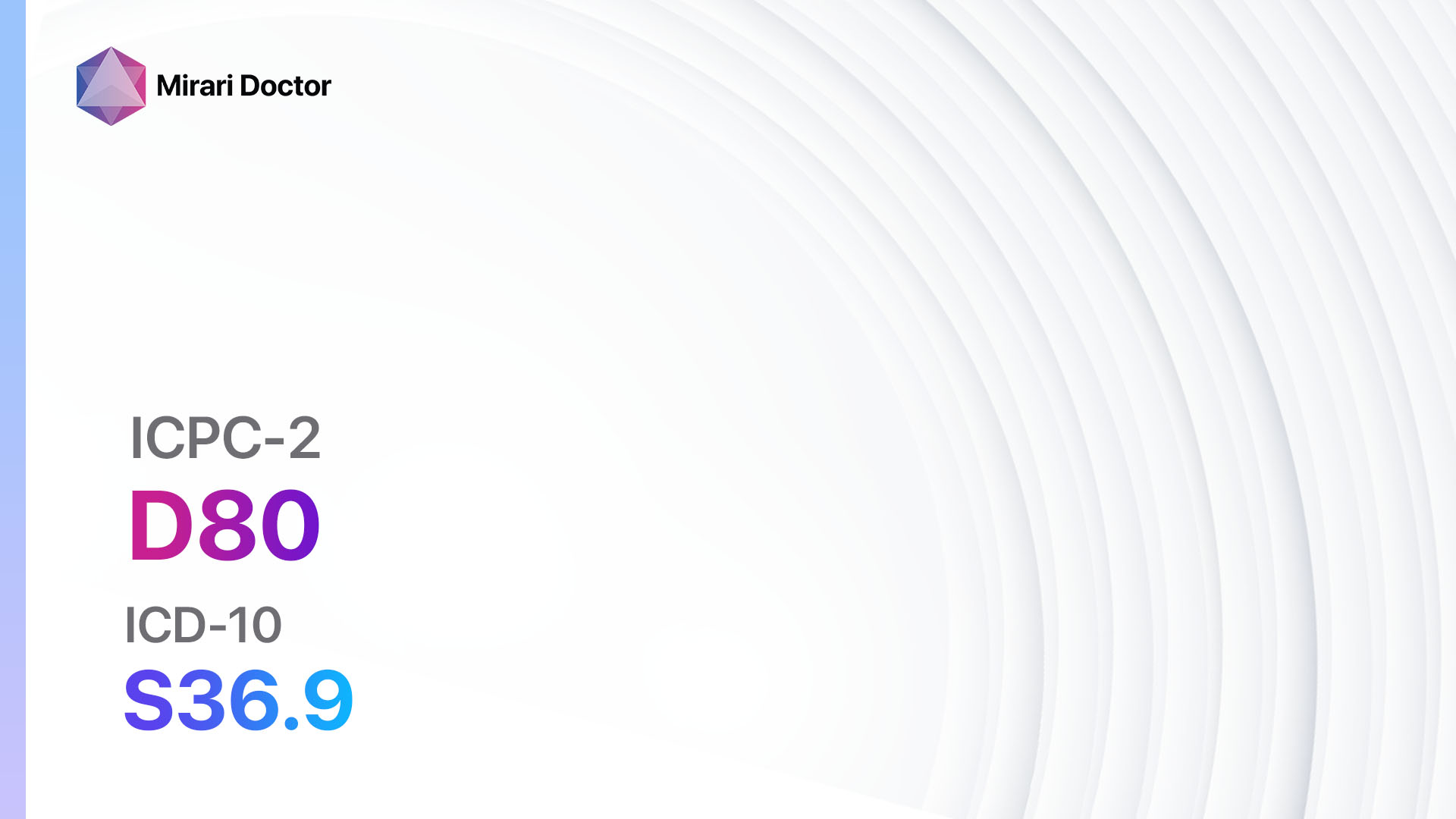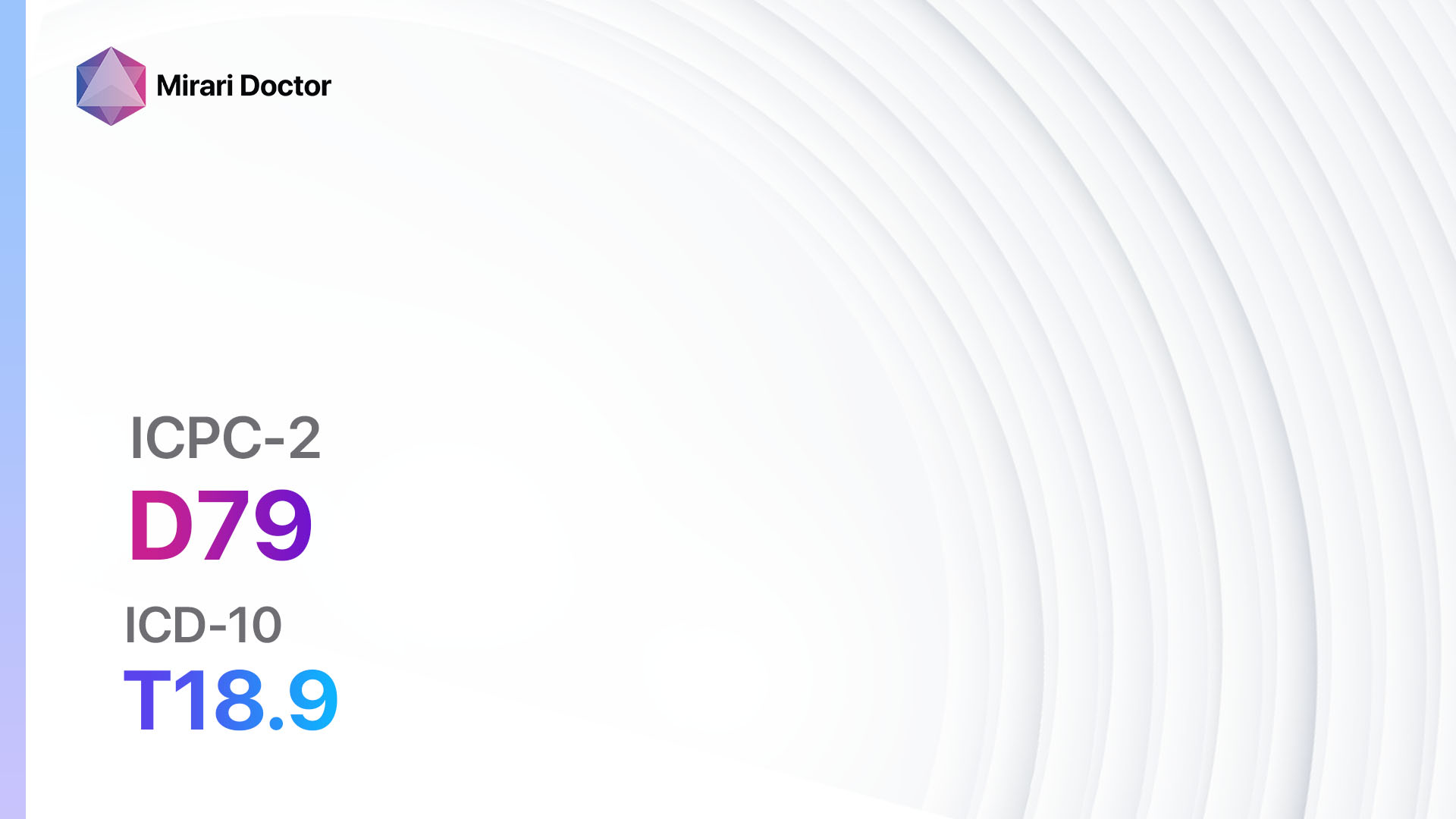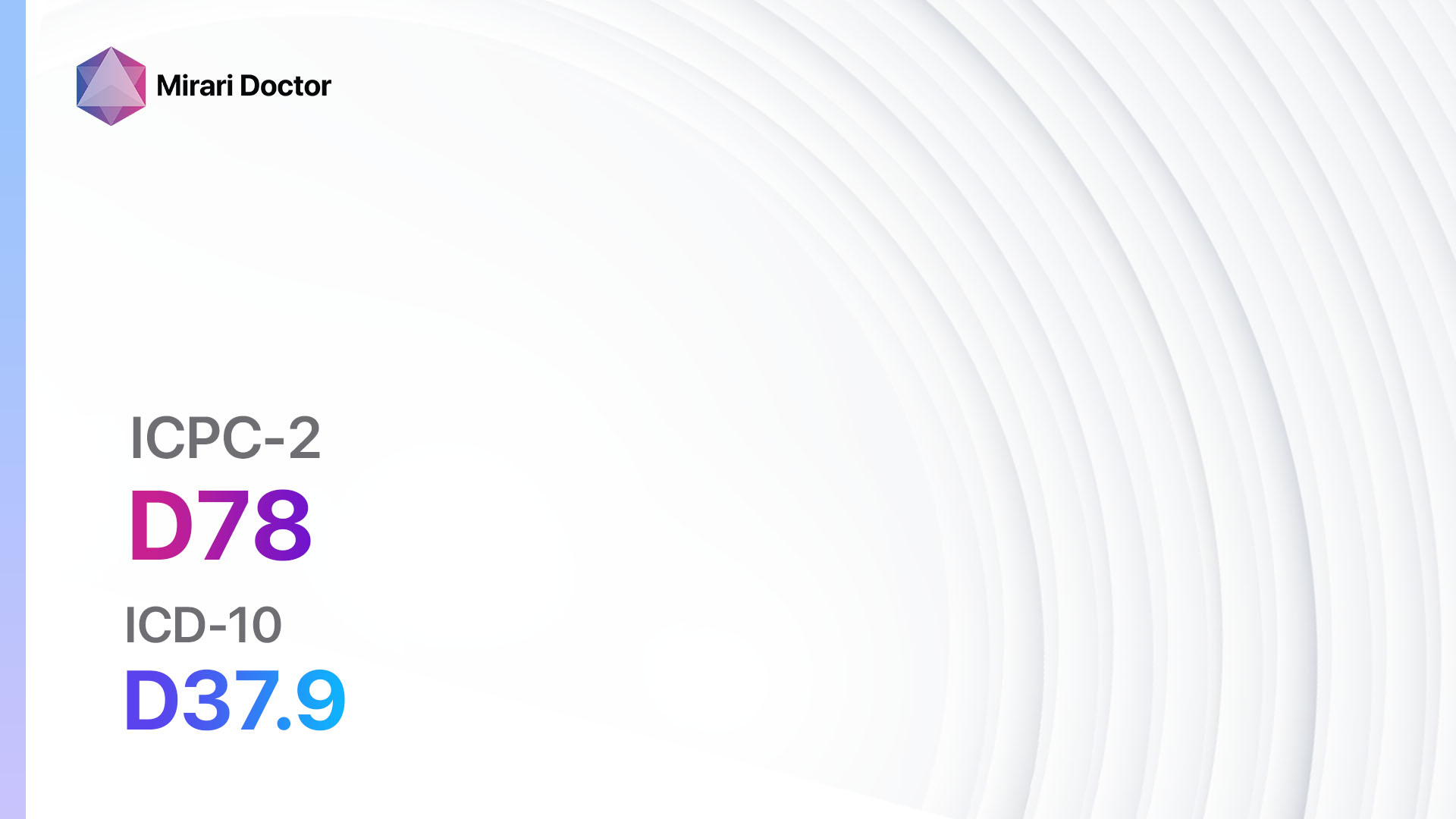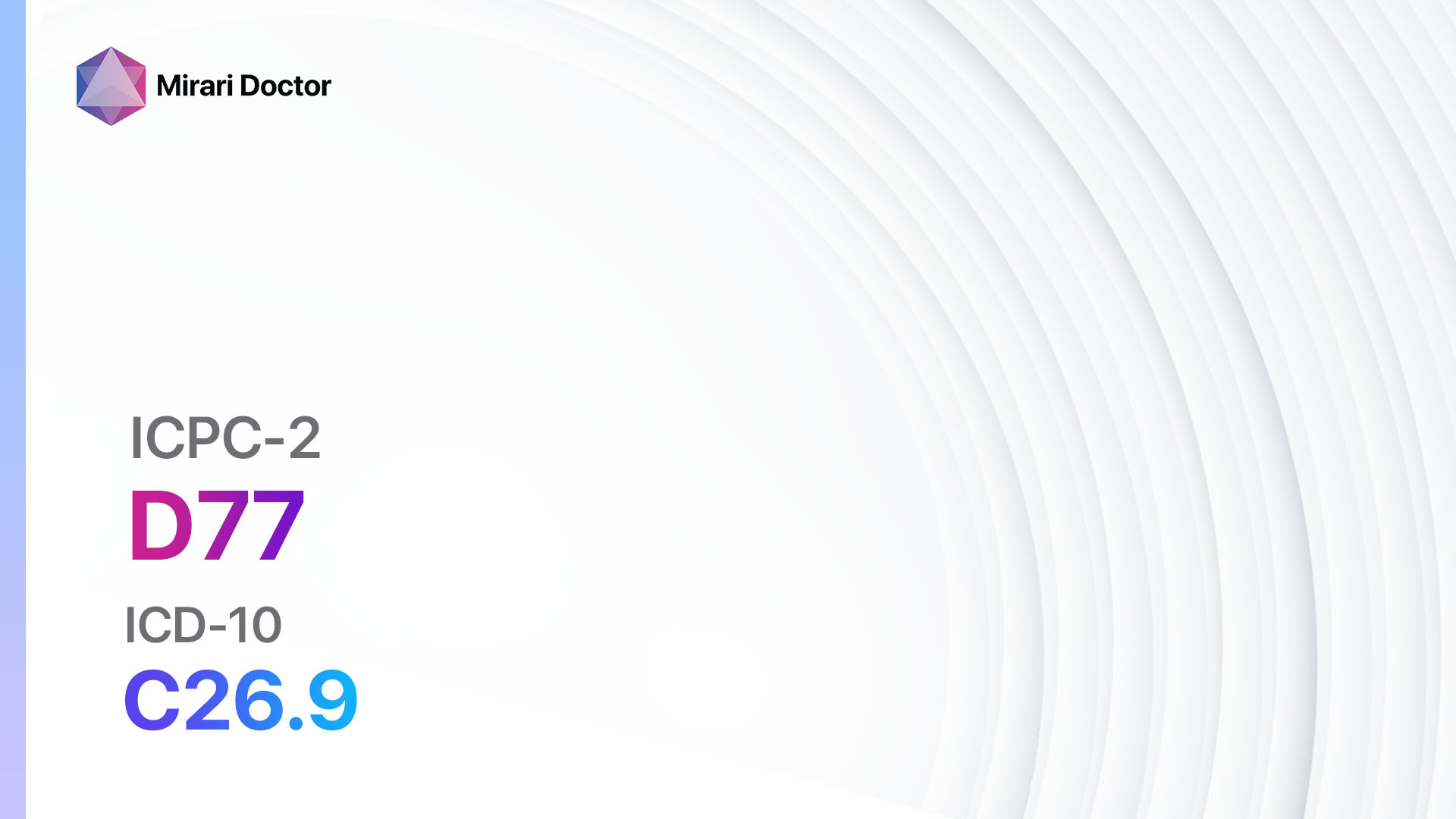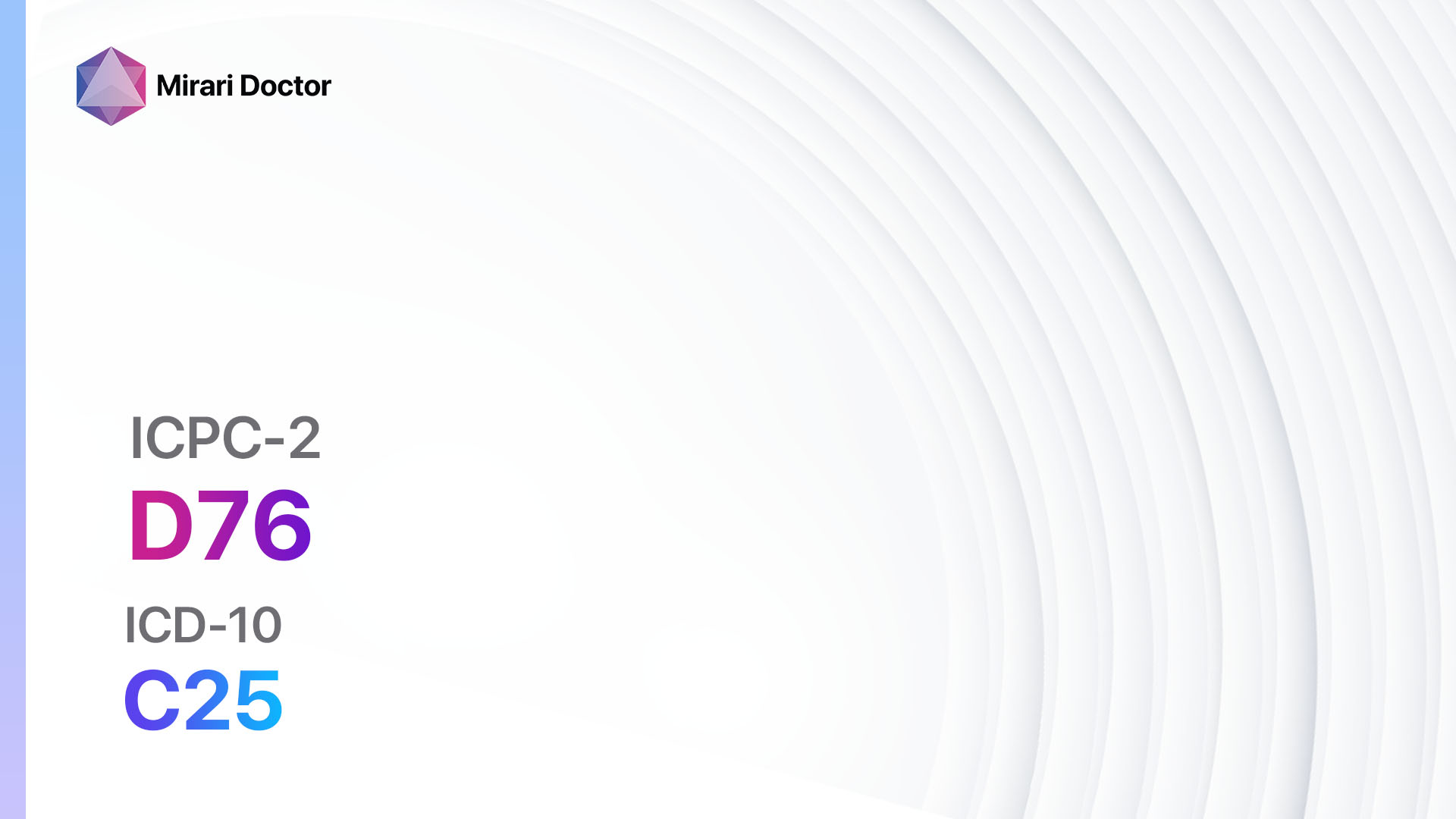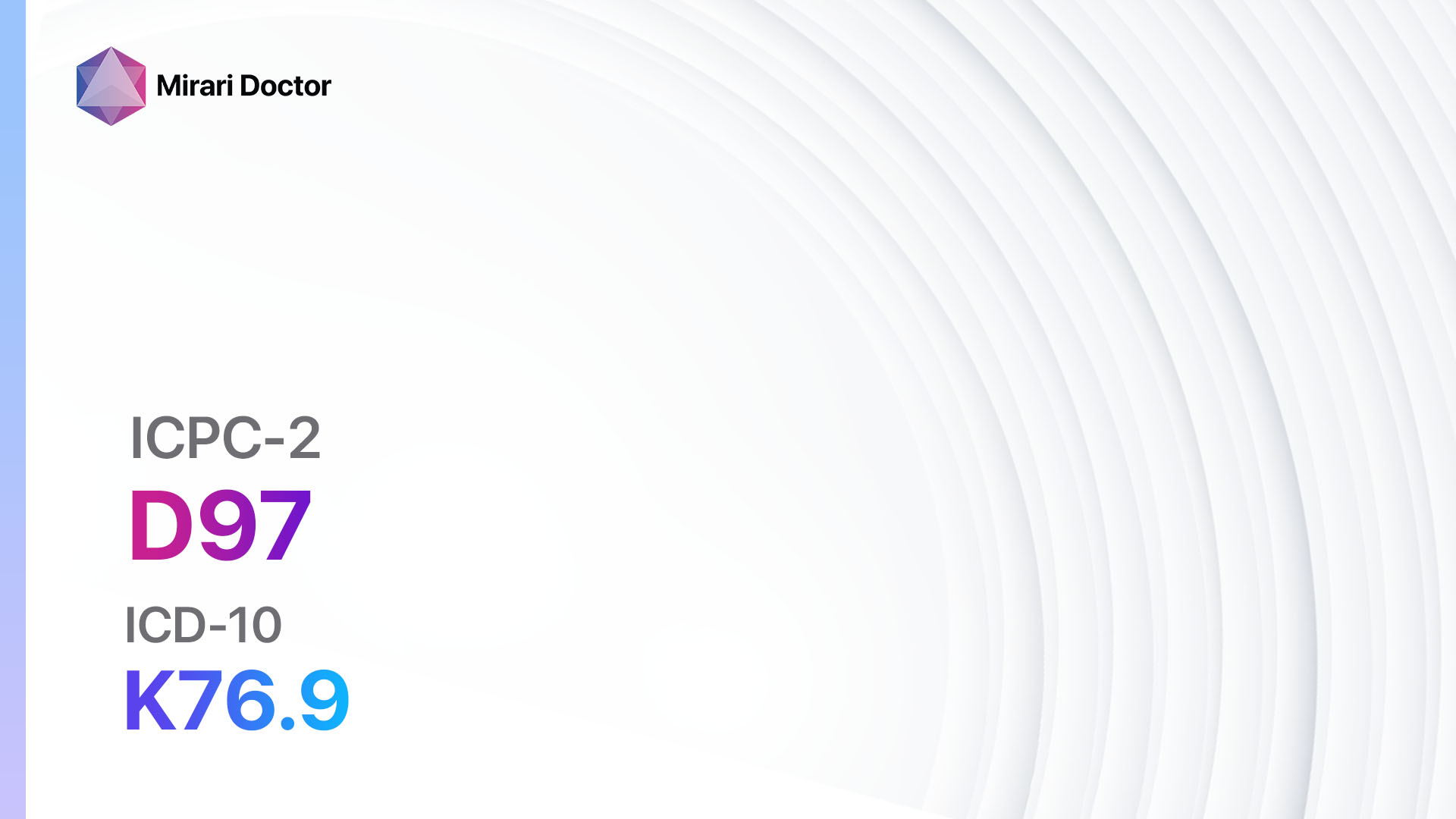
Introduction
Liver disease NOS refers to a non-specific liver condition that does not fit into any specific diagnostic category. It is important to diagnose and manage liver disease NOS as it can lead to significant complications if left untreated[1]. The aim of this guide is to provide healthcare professionals with a comprehensive overview of the diagnostic steps, possible interventions, and patient education for liver disease NOS.
Codes
Symptoms
- Fatigue: Patients may experience persistent tiredness and lack of energy[4].
- Abdominal pain: Pain or discomfort in the upper right side of the abdomen[4].
- Jaundice: Yellowing of the skin and eyes[4].
- Nausea and vomiting: Feeling sick and vomiting[4].
- Weight loss: Unexplained weight loss[4].
- Swelling: Swelling in the legs and ankles[4].
- Changes in stool color: Pale or clay-colored stools[4].
- Dark urine: Urine that is dark in color[4].
Causes
- Alcohol abuse: Excessive and prolonged alcohol consumption can lead to liver damage[5].
- Hepatitis B and C: Viral infections that can cause inflammation and damage to the liver[5].
- Non-alcoholic fatty liver disease (NAFLD): Accumulation of fat in the liver, not related to alcohol consumption[5].
- Autoimmune hepatitis: The immune system mistakenly attacks the liver[5].
- Medications and toxins: Certain medications and exposure to toxins can cause liver damage[5].
- Genetic disorders: Inherited conditions that affect liver function[5].
Diagnostic Steps
Medical History
- Gather information about the patient’s alcohol consumption, including quantity and duration[6].
- Inquire about any history of viral hepatitis or exposure to hepatitis B or C[6].
- Ask about any medications or toxins the patient may have been exposed to[6].
- Assess for any family history of liver disease or genetic disorders[6].
- Determine if the patient has any symptoms associated with liver disease[6].
Physical Examination
- Perform a thorough examination of the abdomen, looking for any signs of liver enlargement or tenderness[7].
- Check for jaundice by examining the skin and eyes[7].
- Assess for any signs of fluid retention, such as swelling in the legs and ankles[7].
- Look for any signs of malnutrition or weight loss[7].
- Palpate the liver to assess for any abnormalities[7].
Laboratory Tests
- Liver function tests: Assess liver enzymes, bilirubin levels, and albumin levels[8].
- Complete blood count: Check for anemia or abnormal platelet counts[8].
- Viral hepatitis serology: Test for hepatitis B and C antibodies[8].
- Autoimmune markers: Check for antibodies associated with autoimmune hepatitis[8].
- Imaging studies: Ultrasound, CT scan, or MRI to assess liver structure and detect any abnormalities[8].
- Liver biopsy: Invasive procedure to obtain a sample of liver tissue for further analysis[8].
Follow-up and Patient Education
- Schedule regular follow-up appointments to monitor liver function and assess treatment effectiveness[9].
- Educate the patient about the importance of lifestyle modifications, such as avoiding alcohol and maintaining a healthy diet[9].
- Provide information about support groups or counseling services for patients with liver disease[9].
- Discuss the potential complications of liver disease and the importance of early intervention and management[9].
Possible Interventions
Traditional Interventions
Medications:
Top 5 drugs for Liver disease NOS:
- Ursodeoxycholic acid:
- Cost: $50-$200/month.
- Contraindications: Hypersensitivity to ursodeoxycholic acid.
- Side effects: Diarrhea, constipation, and abdominal pain.
- Severe side effects: Allergic reactions, liver dysfunction.
- Drug interactions: Cholestyramine, aluminum-based antacids.
- Warning: Regular liver function tests required.
- Corticosteroids (e.g., Prednisone):
- Cost: $10-$50/month.
- Contraindications: Active infections, systemic fungal infections.
- Side effects: Weight gain, mood changes, increased appetite.
- Severe side effects: Increased risk of infections, osteoporosis.
- Drug interactions: Nonsteroidal anti-inflammatory drugs (NSAIDs), anticoagulants.
- Warning: Long-term use may require gradual tapering to avoid adrenal insufficiency.
- Immunosuppressants (e.g., Azathioprine, Mycophenolate mofetil):
- Cost: $50-$200/month.
- Contraindications: Hypersensitivity to immunosuppressants, active infections.
- Side effects: Nausea, vomiting, increased risk of infections.
- Severe side effects: Bone marrow suppression, liver toxicity.
- Drug interactions: Allopurinol, ACE inhibitors.
- Warning: Regular monitoring of blood counts and liver function required.
- Antiviral medications (e.g., Entecavir, Sofosbuvir):
- Cost: $500-$1,000/month.
- Contraindications: Hypersensitivity to antiviral medications.
- Side effects: Headache, fatigue, nausea.
- Severe side effects: Hepatitis B reactivation, renal impairment.
- Drug interactions: Rifampin, St. John’s wort.
- Warning: Regular monitoring of viral load and liver function required.
- Diuretics (e.g., Furosemide, Spironolactone):
- Cost: $10-$50/month.
- Contraindications: Anuria, hypersensitivity to diuretics.
- Side effects: Increased urination, electrolyte imbalances.
- Severe side effects: Dehydration, hypotension.
- Drug interactions: ACE inhibitors, NSAIDs.
- Warning: Regular monitoring of electrolytes and renal function required.
Alternative Drugs:
- N-acetylcysteine: Antioxidant that may help protect the liver.
- Silymarin: Extracted from milk thistle, it has hepatoprotective properties.
- Vitamin E: Antioxidant that may help reduce liver inflammation.
- Lactulose: Used to treat hepatic encephalopathy.
- Rifaximin: Antibiotic used to prevent recurrent hepatic encephalopathy.
Surgical Procedures:
- Liver transplantation: Surgical procedure to replace a diseased liver with a healthy liver from a donor. Cost: $500,000 to $800,000.
- Transjugular intrahepatic portosystemic shunt (TIPS): Placement of a stent-like device to create a pathway between the portal vein and hepatic vein to reduce portal hypertension. Cost: $20,000 to $30,000.
Alternative Interventions
- Milk thistle: Herbal supplement that may have hepatoprotective properties. Cost: $10-$20/month.
- Acupuncture: May help improve liver function and reduce symptoms. Cost: $60-$120 per session.
- Yoga and meditation: Stress reduction techniques that may help improve overall well-being. Cost: Varies depending on the location and instructor.
- Dietary modifications: A healthy diet low in fat and alcohol can help support liver health. Cost: Varies depending on food choices.
- Exercise: Regular physical activity can help improve liver function and overall health. Cost: Varies depending on the type of exercise.
Lifestyle Interventions
- Avoid alcohol: Alcohol can further damage the liver and worsen liver disease. Cost: Varies depending on personal choices.
- Maintain a healthy diet: A diet low in fat and high in fruits, vegetables, and whole grains can support liver health. Cost: Varies depending on food choices.
- Exercise regularly: Regular physical activity can help improve liver function and overall health. Cost: Varies depending on the type of exercise.
- Manage weight: Maintaining a healthy weight can reduce the risk of fatty liver disease. Cost: Varies depending on personal choices.
- Avoid exposure to toxins: Minimize exposure to chemicals and toxins that can damage the liver. Cost: Varies depending on personal choices.
It is important to note that the cost ranges provided are approximate and may vary depending on the location and availability of the interventions.
Mirari Cold Plasma Alternative Intervention
Understanding Mirari Cold Plasma
- Safe and Non-Invasive Treatment: Mirari Cold Plasma is a safe and non-invasive treatment option for various skin conditions. It does not require incisions, minimizing the risk of scarring, bleeding, or tissue damage.
- Efficient Extraction of Foreign Bodies: Mirari Cold Plasma facilitates the removal of foreign bodies from the skin by degrading and dissociating organic matter, allowing easier access and extraction.
- Pain Reduction and Comfort: Mirari Cold Plasma has a local analgesic effect, providing pain relief during the treatment, making it more comfortable for the patient.
- Reduced Risk of Infection: Mirari Cold Plasma has antimicrobial properties, effectively killing bacteria and reducing the risk of infection.
- Accelerated Healing and Minimal Scarring: Mirari Cold Plasma stimulates wound healing and tissue regeneration, reducing healing time and minimizing the formation of scars.
Mirari Cold Plasma Prescription
Video instructions for using Mirari Cold Plasma Device – D97 Liver disease NOS (ICD-10:K76.9)
| Mild | Moderate | Severe |
| Mode setting: 1 (Infection) Location: 3 (Kidney, Liver & Spleen) Morning: 15 minutes, Evening: 15 minutes |
Mode setting: 1 (Infection) Location: 3 (Kidney, Liver & Spleen) Morning: 30 minutes, Lunch: 30 minutes, Evening: 30 minutes |
Mode setting: 1 (Infection) Location: 3 (Kidney, Liver & Spleen) Morning: 30 minutes, Lunch: 30 minutes, Evening: 30 minutes |
| Mode setting: 2 (Wound Healing) Location: 3 (Kidney, Liver & Spleen) Morning: 15 minutes, Evening: 15 minutes |
Mode setting: 2 (Wound Healing) Location: 3 (Kidney, Liver & Spleen) Morning: 30 minutes, Lunch: 30 minutes, Evening: 30 minutes |
Mode setting: 2 (Wound Healing) Location: 3 (Kidney, Liver & Spleen) Morning: 30 minutes, Lunch: 30 minutes, Evening: 30 minutes |
| Mode setting: 3 (Antiviral Therapy) Location: 3 (Kidney, Liver & Spleen) Morning: 15 minutes, Evening: 15 minutes |
Mode setting:3 (Antiviral Therapy) Location: 3 (Kidney, Liver & Spleen) Morning: 30 minutes, Lunch: 30 minutes, Evening: 30 minutes |
Mode setting: 3 (Antiviral Therapy) Location: 3 (Kidney, Liver & Spleen) Morning: 30 minutes, Lunch: 30 minutes, Evening: 30 minutes |
| Mode setting: 7 (Immunotherapy) Location: 1 (Sacrum) Morning: 15 minutes, Evening: 15 minutes |
Mode setting: 7 (Immunotherapy) Location: 1 (Sacrum) Morning: 30 minutes, Lunch: 30 minutes, Evening: 30 minutes |
Mode setting: 7 (Immunotherapy) Location: 1 (Sacrum) Morning: 30 minutes, Lunch: 30 minutes, Evening: 30 minutes |
| Total Morning: 60 minutes approx. $10 USD, Evening: 60 minutes approx. $10 USD |
Total Morning: 120 minutes approx. $20 USD, Lunch: 120 minutes approx. $20 USD, Evening: 120 minutes approx. $20 USD, |
Total Morning: 120 minutes approx. $20 USD, Lunch: 120 minutes approx. $20 USD, Evening: 120 minutes approx. $20 USD, |
| Usual treatment for 7-60 days approx. $140 USD – $1200 USD | Usual treatment for 6-8 weeks approx. $2,520 USD – $3,360 USD |
Usual treatment for 3-6 months approx. $5,400 USD – $10,800 USD
|
 |
|
Use the Mirari Cold Plasma device to treat Liver disease NOS effectively.
WARNING: MIRARI COLD PLASMA IS DESIGNED FOR THE HUMAN BODY WITHOUT ANY ARTIFICIAL OR THIRD PARTY PRODUCTS. USE OF OTHER PRODUCTS IN COMBINATION WITH MIRARI COLD PLASMA MAY CAUSE UNPREDICTABLE EFFECTS, HARM OR INJURY. PLEASE CONSULT A MEDICAL PROFESSIONAL BEFORE COMBINING ANY OTHER PRODUCTS WITH USE OF MIRARI[10].
Step 1: Cleanse the Skin
- Start by cleaning the affected area of the skin with a gentle cleanser or mild soap and water. Gently pat the area dry with a clean towel.
Step 2: Prepare the Mirari Cold Plasma device
- Ensure that the Mirari Cold Plasma device is fully charged or has fresh batteries as per the manufacturer’s instructions. Make sure the device is clean and in good working condition.
- Switch on the Mirari device using the power button or by following the specific instructions provided with the device.
- Some Mirari devices may have adjustable settings for intensity or treatment duration. Follow the manufacturer’s instructions to select the appropriate settings based on your needs and the recommended guidelines.
Step 3: Apply the Device
- Place the Mirari device in direct contact with the affected area of the skin. Gently glide or hold the device over the skin surface, ensuring even coverage of the area experiencing.
- Slowly move the Mirari device in a circular motion or follow a specific pattern as indicated in the user manual. This helps ensure thorough treatment coverage.
Step 4: Monitor and Assess:
- Keep track of your progress and evaluate the effectiveness of the Mirari device in managing your Liver disease NOS. If you have any concerns or notice any adverse reactions, consult with your health care professional.
Note
This guide is for informational purposes only and should not replace the advice of a medical professional. Always consult with your healthcare provider or a qualified medical professional for personal advice, diagnosis, or treatment. Do not solely rely on the information presented here for decisions about your health. Use of this information is at your own risk. The authors of this guide, nor any associated entities or platforms, are not responsible for any potential adverse effects or outcomes based on the content.
Mirari Cold Plasma System Disclaimer
- Purpose: The Mirari Cold Plasma System is a Class 2 medical device designed for use by trained healthcare professionals. It is registered for use in Thailand and Vietnam. It is not intended for use outside of these locations.
- Informational Use: The content and information provided with the device are for educational and informational purposes only. They are not a substitute for professional medical advice or care.
- Variable Outcomes: While the device is approved for specific uses, individual outcomes can differ. We do not assert or guarantee specific medical outcomes.
- Consultation: Prior to utilizing the device or making decisions based on its content, it is essential to consult with a Certified Mirari Tele-Therapist and your medical healthcare provider regarding specific protocols.
- Liability: By using this device, users are acknowledging and accepting all potential risks. Neither the manufacturer nor the distributor will be held accountable for any adverse reactions, injuries, or damages stemming from its use.
- Geographical Availability: This device has received approval for designated purposes by the Thai and Vietnam FDA. As of now, outside of Thailand and Vietnam, the Mirari Cold Plasma System is not available for purchase or use.
References
- Medscape. (n.d.). Acute Liver Failure Clinical Presentation. Retrieved from https://emedicine.medscape.com/article/177354-clinical
- MIRARI® Prescription. (2021, January 14). D97 Liver disease NOS ( ICD-10:K76.9 ). Retrieved from https://www.youtube.com/watch?v=AsC0CeB1h48
- ICD10data.com. (2024). 2024 ICD-10-CM Diagnosis Code K76.9: Liver disease, unspecified. Retrieved from https://www.icd10data.com/ICD10CM/Codes/K00-K95/K70-K77/K76-/K76.9
- Cleveland Clinic. (2023, October 4). Liver Disease: Signs & Symptoms, Causes, Stages, Treatment. Retrieved from https://my.clevelandclinic.org/health/diseases/17179-liver-disease
- Healthline. (n.d.). Liver Disease: Types of Liver Problems, Causes, and More. Retrieved from https://www.healthline.com/health/liver-diseases
- Mayo Clinic. (n.d.). Liver problems – Diagnosis and treatment. Retrieved from https://www.mayoclinic.org/diseases-conditions/liver-problems/diagnosis-treatment/drc-20374507
- Forns, J., Cainzos‐Achirica, M., Hellfritzsch, M., Morros, R., Poblador‐Plou, B., Hallas, J., … & Castellsagué, J. (2019). Validity of ICD‐9 and ICD‐10 codes used to identify acute liver injury: A study in three European data sources. Pharmacoepidemiology and drug safety, 28(7), 965-975. https://www.ncbi.nlm.nih.gov/pmc/articles/PMC6618105/
- Newsome, P. N., Cramb, R., Davison, S. M., Dillon, J. F., Foulerton, M., Godfrey, E. M., … & Yeoman, A. (2018). Guidelines on the management of abnormal liver blood tests. Gut, 67(1), 6-19. https://www.ncbi.nlm.nih.gov/pmc/articles/PMC5736615/
- CarePlus. (n.d.). Liver disease: Symptoms, treatment and prevention. Retrieved from https://careplusvn.com/en/liver-disease-symptoms-treatment-and-prevention
- Liver Disease: Symptoms, Causes & Treatment. (n.d.). Retrieved from https://www.medcare.ae/en/health-library/liver-disease-symptoms-causes-and-treatment.html
Related articles
Made in USA


